Fish farming is the fastest-growing production sector in the world. It is the process of commercially producing aquatic organisms in a controlled or semi-controlled environment to increase productivity. New Zealand is leading the way in ensuring ecological, sustainable management of its fisheries. Fish farming commercially produces aquatic organisms in a controlled or semi-controlled environment to increase productivity. Commercial fish farming is considered to be an economically profitable business.
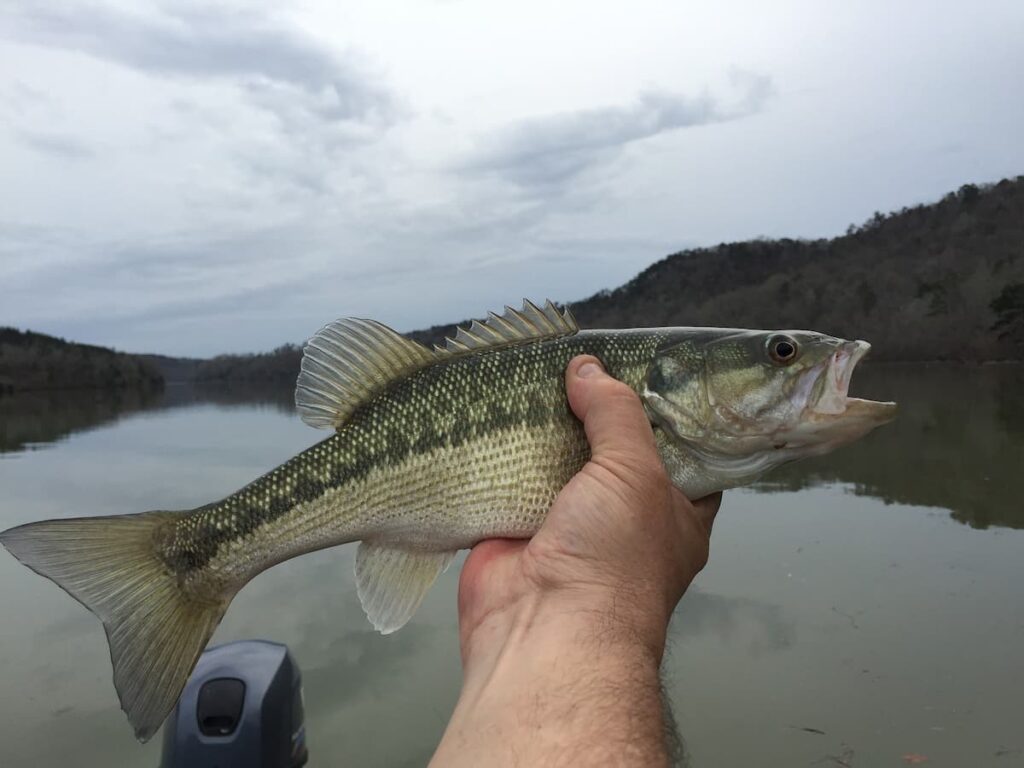
Hence, this business ensures a quick return on your investment. However, irresponsible harvesting of fish leads to the loss of natural species and the extinction of some species. Therefore, fish farming is a way to conserve species and prevent the depletion of natural resources. The farm may supply the baby or small fish to other farms so that the fish can be raised for harvest in those farms. Generally, the fish is slaughtered, cleaned, and processed away from the farms by other private companies.
Fish farming in New Zealand
Fish farming importance in New Zealand
Salmon farming is a big business in New Zealand and is expected to expand in the coming years. Most farmed salmon have been produced in Marlborough Sounds and Stewart Island marine environments. Salmon are reared in land-based hatcheries and then transferred to sea cages or freshwater farms, where they are fed artificial diets, including fortified fish meat and fish oil. About 50 percent of New Zealand’s farmed salmon is exported, with Japan and Australia as the largest markets.
Fish farming also allows farmers to create a habitat for raising a specific type of fish. It enables them to focus on the species they intend to raise and eliminates the difficult process of separating unwanted species and marine life during harvest. Different types of marine creatures also need specific types of food to survive, and a fish farmer can cater to the needs of a specific species.
Fish farming helps to accelerate the supply of fish to keep up with demand compared to traditional methods of fishing and breeding through the oceans, which are often time-consuming. Fish are rich in protein and, therefore, in high demand, increasing fish prices and allowing for higher margins. So, the profitability of fish farming appears. In addition, fish farming helps in supplying fish-related products to various industries.
Invasive fish farming methods in New Zealand
Cage fish farming is currently very important and is a promising and economically profitable form of raising marketable fish. However, salmon need to be regularly sorted and separated by size, as larger fish trapped can threaten smaller fish. This repeated manipulation in fish farms is a major cause of stress and pain for the fish. Other invasive methods include vaccination, loading, transport, and breeding techniques that remove the male’s sperm and the female’s eggs.
As a result, farmed fish can suffer from injury and disease and are also vulnerable to predators and other threats. Many New Zealanders have grown up fishing and have been conditioned not to regard fish welfare like land animals. As a result, fish are usually fished out of the water with a hook through their mouth and are often killed by a blow to the head or left to suffocate on land as we do underwater. Fish are also affected by pollution. Oil spills, farm runoff, and plastic waste in the ocean pose a huge threat to fish and their habitats.
In case you missed it: Fish Farming Loan in India – How to Get/Apply, Banks, Interest Rate, Documents, and NABARD
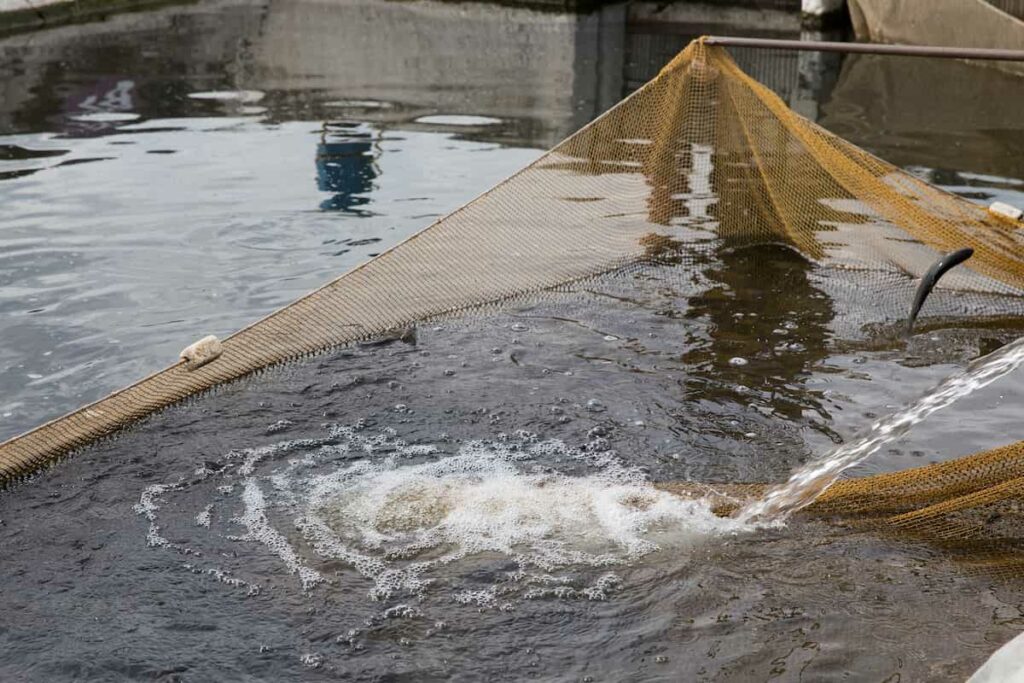
Design your pond for fish farming
Remember, deep pools are not necessary. If you start with a deep pond, you may want to build cages to confine the fish to that depth. The pond should only be 4-6 feet deep. The size depends on the design of your farm. Pond stocking rates are based on the surface area, not pond volume. Stocking rates are 2,000 to 6,000 pounds per acre. The rate depends on the species of fish. The best land for pond construction is flat or gently sloping, with plenty of clay. Remember to leave soil around the ponds so it is easy to feed and harvest the fish.
Fish species in New Zealand
New Zealand has some species that may be suitable for fish farming. Fish species raising in New Zealand are – Snapper, Kingfish, Tarakihi, Trevally, Golden Snapper, Butterfish, Barracouta, Trumpeter, Trout, Salmon, Paua, Hapuka, Kingfish, Eel, Albacore, Brown Trout, Leatherjacket, Gemfish, Black Oreo Dory, Stargazer / Monkfish, Pacific Jack Mackeral, Yellowfin Tuna, Pacific Bluefin Tuna, Yellow-Eyed Mullet, Grey Mullet, King Salmon, Chinook Salmon, Sole, Sand Flounder, Bluenose, Rig Shark / Lemonfish, Blue Moki, Kahawai, Ling, and John Dory, etc.
Fish farming supplies
The aquaculture industry requires fish farming equipment. Important fish farming supplies are feed and feeders, filtration systems, hatchery supplies, heating and cooling systems, lighting, hydroponics equipment, plumbing, predator control, tank, and water treatment products. Feed quality is an important factor in fish farming and is important for fish health. Depending on the feed quality, it can help with desirable color, growth, and overall health. Different feeds are suitable for different aquaculture practices and species.
Water filtration systems are very important when trying to reduce environmental impact. Filtration mainly involves removing waste products from water. Different filtering systems can be used, but it depends on the condition of the filtration process. In addition, a staging filtration system must be in place to ensure optimum results. Hatchery supplies include everything from fish graders to shipping supplies for spawning and handling containers.
Skills and knowledge required for fish farming in New Zealand
Aquaculture farmers need:
- Knowledge of how to grow and harvest fish or shellfish
- Practical skills such as being able to tie knots and tie ropes
- Boat handling and navigation skills, including reading charts and using a compass
- Basic mechanical skills
- Ability to maintain equipment on farms, including repairing broken lines
- Awareness of health and safety practices
In case you missed it: A Guide to Understand RAS Fish Farming: Check How this Helps Beginners
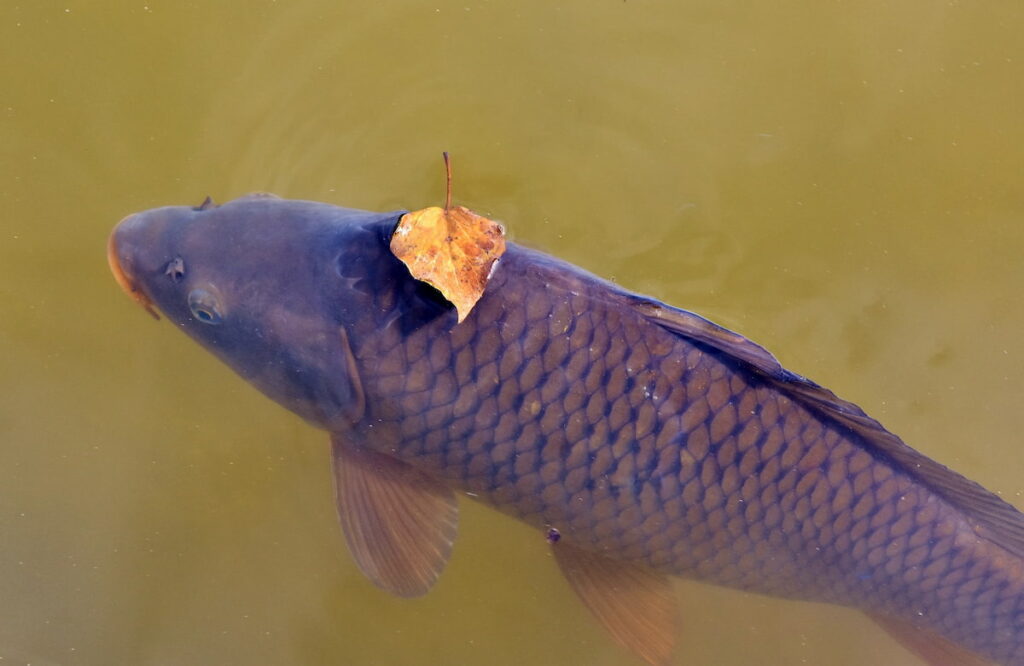
Is the fish farming business profitable in New Zealand?
- Fish farming is a profitable business for several reasons.
- Fish farming is one of the world’s fastest-growing sectors of food production.
- There is a huge and growing demand for fish and fish products worldwide.
- The market demand and price of fish-related products are always high.
- It plays an important role in the economy, providing thousands of jobs in operations and ancillary services.
- There are various types of fast-growing fish available. Cultivating these fast-growing species of fish ensures a quick return on your investment.
- People with other professions can also start this business.
- Funding assistance and bank loans are also available for the fish farming project.
Steps involved in fish farming in New Zealand
Step 1: Select the fish farming method
The first thing you want to consider when starting a fish farm is the type of fish you will use for farming. Selecting the right fish plays an important role in the success of a fish farming business. The decision must be based on maintenance, market demand, management, resource availability, etc.
Step 2: Decide on the capital
For every business, a capital decision is important. Also, to find the cost of starting this business, you should do extensive market research to see the target market and competition in the same area. And it is important to identify the actual costs of purchasing raw materials and running the business. Here are a few types of expenses you’ll need to monitor:
- Expenses related to infrastructure or the area where you’ll be raising or rearing the fish, such as fishing tanks or artificially created man-made ponds or structures.
- The types of fish you will raise in your fish farm.
- And other variable costs related to purchasing fish feed, electricity or water resources, labor costs, and other resources required to carry out business activities.
Step 3: Understand the target market
It is important to do a business plan and feasibility analysis before starting fish farming. Also, we should do deep market research before starting a fish farming business. Try to understand the local market demand, and if you are going to start fish farming for export, the first talk to fish processing units. Then, develop an alternative marketing strategy. The types of consumers will vary depending on the fish you are raising.
If you raise fish for commercial food products, restocking, or sport, you will have big businesses in your base. This is because it requires a large quantity of fish. Some users may include state or federal organizations that restock natural resources. If you raise fish for pets or aquariums, your target audience will be pet stores and specialty fish dealers. Customers can choose to contact you directly to remove middlemen and speed up sales.
In case you missed it: A Guide to Understand Biofloc Fish Farming: Check How this Guide Helps Fish Farmers
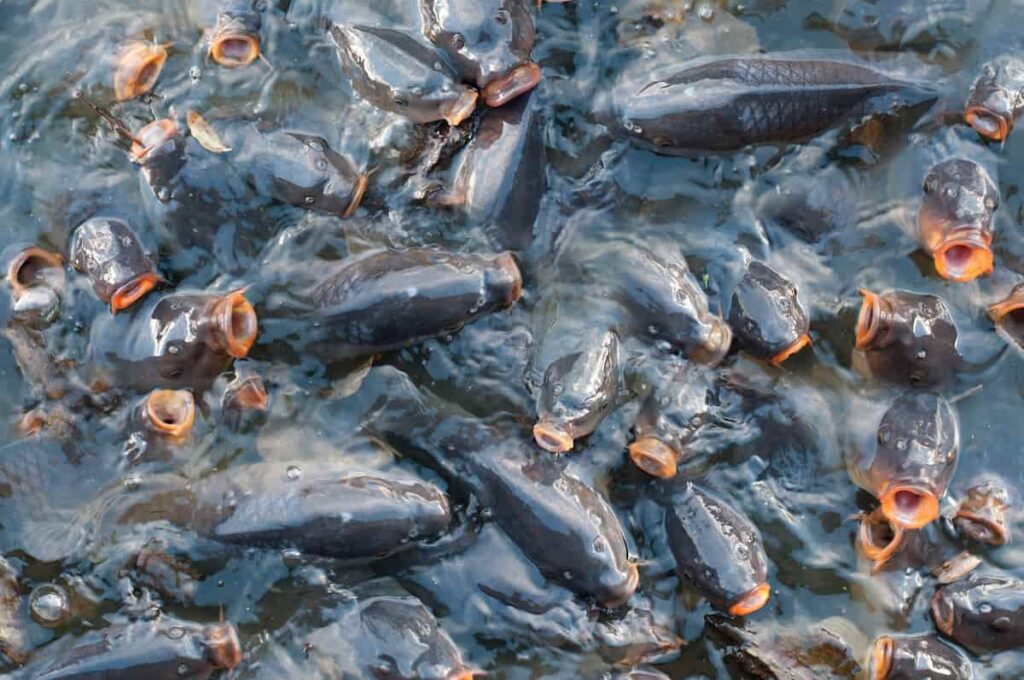
Step 4: Learn the skills required for fish farming
Certain skills are necessary when starting a fish farming business. Some government-run farms run training programs about fish farming. You can attend these programs to learn skills. Also, learned skills by working on a successful fish farm. It will teach disease control, water quality management, marketing, feeding, and processing. Some important things to start a fish farming business are;
- For fish farming, you have a consistent quality water source.
- Check if the water temperature level is suitable for breeding fish.
- Make sure we have easy access to the fish pond for harvesting and feeding.
- Understand modern technical methods of risk management
- Locating suppliers for fish eggs, fingerlings, and feed are important.
- Learn skills about the permits and legal compliance required to start a fish farming business in your area.
Step 5: Create a Fish Farming Business Plan
A business plan document is essential if you look forward to a profitable fish farm. A business plan is a document serving as a roadmap for a company’s future operational activities. Moreover, it is the most important tool for arranging funds from investors. Some of the basic issues your fish farming business plan should address are:
- Start-up and recurring costs for running a fish farm
- Your target customers
- Pricing plan
- Profit margin
- How and where do you sell the fish
Step 6: Purchase of equipment required for fish farming
Starting a fish farm business is the same for small and large farmers. Below are some basic equipment required for a fish farming business.
- Pumps
- Fish Counters
- Water Testing Equipment
- Nets/Seine Reels
- Fish Tanks / Ponds
- Aeration Equipment
- Fish Graders
Pumps are used to pump water into or out of a pond. These pumps are well-equipped. In addition, it helps ensure that you have a constant water supply for the pond. Water testing equipment is used to help with water testing. Use this device to determine if the water is good for fish.
The net collects all species of fish for harvest. They help catch large numbers of fish. Fish tanks or ponds are designed to collect large quantities of fish for marketing and harvesting. They are designed to provide a better environment for fish. Aeration equipment enables good oxygen flow within the pond.
In case you missed it: How to Build a Fish Pond for Beginners: For Backyard, Outdoors, Start with Best and Cheap Ideas
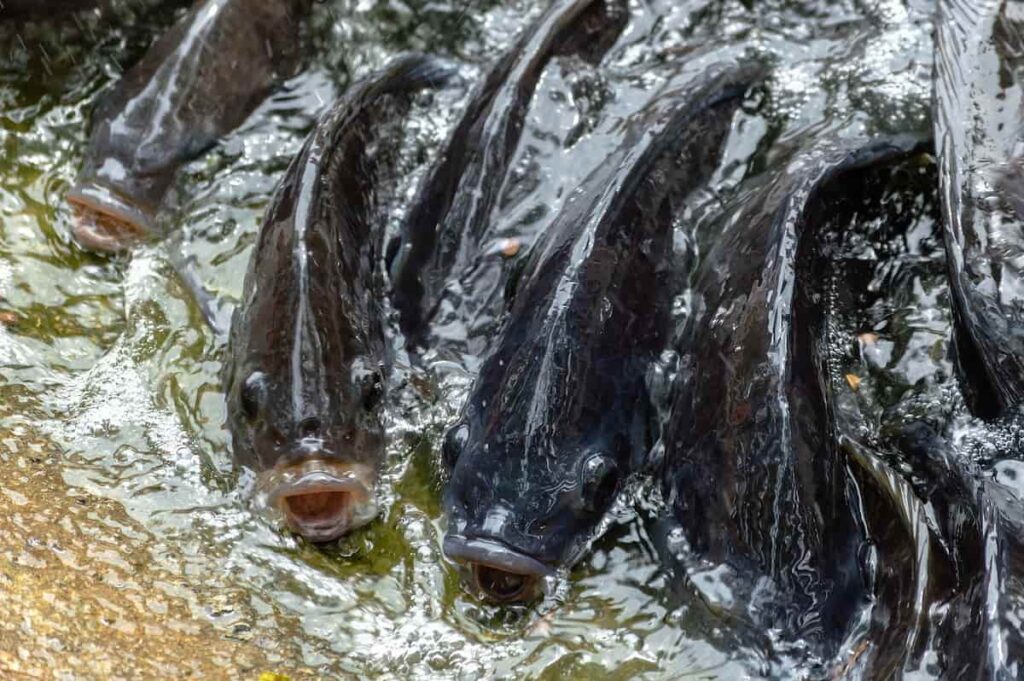
Feeding management for fish farming in New Zealand
When raising fish in ponds, it is important to ensure that the fish gain maximum weight in the shortest possible time. But, when taking care of the rearing and feeding process, ensure that the water’s pH level is within 7 to 8 to ensure optimal growth. Food must provide essential nutrients to support growth, maintenance, and reproduction. The food should also contain essential nutrients like proteins, vitamins, fats, carbohydrates, and other minerals.
Healthy fish diets natural to the pond, such as zooplankton, insect larvae, and phytoplankton, are easy to maintain. This means that the natural habitat required for fish breeding is protected to a certain extent. To increase the growth rate of phytoplankton, you can add organic farming material to the water pond. Additionally, supplements are provided in either dry/moist forms. If the fish feed on the surface, offer floating balls. If your fish breed has chosen underwater feeds, offer sinking pellets. This way, you can keep fish healthy and succeed in your fish farm business plan.
Frequently asked questions about fish farming in New Zealand
How many fishing companies are there in NZ?
New Zealand has more than 1,500 commercial fishing vessels registered and 239 licensed fish receivers and processors.
How many fish are there in New Zealand?
About 600,000 New Zealanders, about thirteen percent of the population, fish recreationally in coastal waters yearly.
What fish is famous in New Zealand?
Snapper is one of New Zealand’s most popular game and table fish.
Can you get tilapia in NZ?
Koi carp and Tilapia (Oreochromis species) are among the most popular farmed fish worldwide but are undesirable in New Zealand.
What is the biggest problem in fish farming?
A major problem in fish farming is the lack of good quality seed (fish seed) availability. To overcome this problem, methods of rearing these fish in ponds through hormonal stimulation have been explored. This ensures the supply of pure fish seeds in the required quantity.
Is fish farming effective?
In terms of wider environmental impact, aquaculture has the potential to grow food more efficiently than most forms of animal agriculture because it can be done with substantially less reliance on natural resources.
In case you missed it: How to Start Fish Farming on Terrace at Home: in Tanks on Small Scale, and a Guide for Rooftop Fish Farming
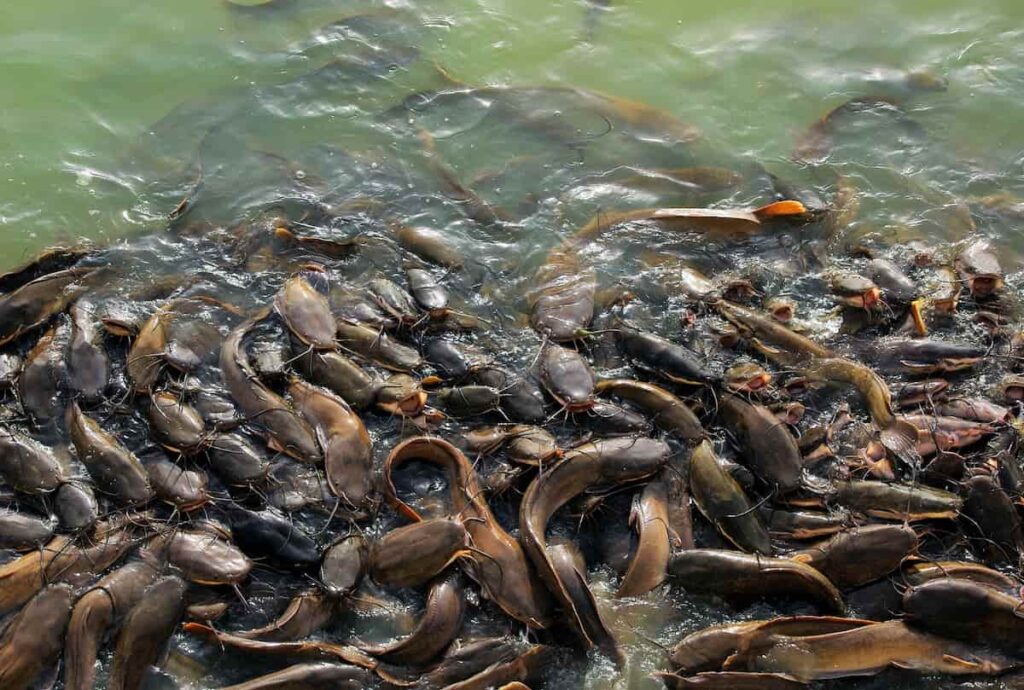
What fish can you use for aquaponics in NZ?
Tilapia is a freshwater fish that grows quickly and has plump white flesh. It is most commonly grown in aquaponics because it can tolerate a wide variety of water quality. Other fish, such as Brim, Bass, Carp, Trout, Goldfish, and Koi, can be raised in this system.
Do you need a license to fish farming in NZ?
You do not need a license to fish in the seas around New Zealand. However, you need a license for freshwater fishing (in lakes and rivers).
What are the requirements for fish farming?
Land, water, capital, a market, and management skills are essential for successful fish farming. Knowing these requirements will help you plan and develop your business.
Conclusion
New Zealand ranks among the best fishing countries in the world. It is a form of aquaculture in which fish are raised in cages to be sold as food. It is the fastest-growing area of animal feed production. Inland fish can also be farmed using brackish water, although most inland aquaculture uses fresh water, and most finfish farmed in saltwater are produced in the ocean. Most of the world’s fish is produced through inland aquaculture, rivers, lakes, and fish farms. Like other animal-based industries, raising and caring for fish may be the sole function of a fish farm.
- Economical Aquaculture: A Guide to Low-Budget Fish Farming
- 15 Common Planting Errors That Can Doom Your Fruit Trees
- How to Make Houseplants Bushy: Effective Tips and Ideas
- Innovative Strategies for Boosting Coconut Pollination and Yield
- Pollination Strategies for Maximum Pumpkin Yield
- The Complete Guide to Chicken Fattening: Strategies for Maximum Growth
- Natural Solutions for Tulip Problems: 100% Effective Remedies for Leaf and Bulb-Related Issues
- Revolutionizing Citrus Preservation: Towards a Healthier, Greener Future
- Natural Solutions for Peony Leaf and Flower Problems: 100% Effective Remedies
- Maximizing Profits with Avocado Contract Farming in India: A Comprehensive Guide
- Natural Solutions for Hydrangea Problems: 100% Effective Remedies for Leaf and Flowers
- The Ultimate Guide to Choosing the Perfect Foliage Friend: Bringing Life Indoors
- From Sunlight to Sustainability: 15 Ways to Use Solar Technology in Agriculture
- The Ultimate Guide to Dong Tao Chicken: Exploring from History to Raising
- The Eco-Friendly Makeover: How to Convert Your Unused Swimming Pool into a Fish Pond
- Mastering the Art of Delaware Chicken Farming: Essentials for Healthy Backyard Flocks
- 20 Best Homemade Fertilizers for Money Plant: DIY Recipes and Application Methods
- How to Craft a Comprehensive Free-Range Chicken Farming Business Plan
- Brighten Your Flock: Raising Easter Egger Chickens for Beauty and Bounty
- How to Optimize Your Poultry Egg Farm Business Plan with These Strategies
- Subsidy for Spirulina Cultivation: How Indian Government Schemes Encouraging Spirulina Farmers
- Ultimate Guide to Raising Dominique Chickens: Breeding, Feeding, Egg-Production, and Care
- Mastering the Art of Raising Jersey Giant Chickens: Care, Feeding, and More
- Ultimate Guide to Raising Legbar Chickens: Breeding, Farming Practices, Diet, Egg-Production
- How to Raise Welsummer Chickens: A Comprehensive Guide for Beginners
- How to Protect Indoor Plants in Winter: A Comprehensive Guide
- Ultimate Guide to Grow Bag Gardening: Tips, Tricks, and Planting Ideas for Urban Gardeners
- Guide to Lotus Cultivation: How to Propagate, Plant, Grow, Care, Cost, and Profit
- Agriculture Drone Subsidy Scheme: Government Kisan Subsidy, License, and How to Apply Online
- Ultimate Guide to Raising Araucana Chickens: Breed Profile, Farming Economics, Diet, and Care
- Bringing Hydroponics to Classroom: Importance, Benefits of Learning for School Students
- Ultimate Guide to Raising Polish Chickens: Breed Profile, Farming Economics, Diet, and Care
- Ultimate Guide to Raising Australorp Chickens: Profile, Farming Economics, Egg Production, Diet, and Care
- Silkie Chicken Farming: Raising Practices, Varieties, Egg Production, Diet, and Care
- Sussex Chicken Farming: Raising Practices, Varieties, Egg Production, Diet and Care
- Homemade Feed Formulations for Livestock: Discover Cost-effective Starter to Finisher Feed Recipes